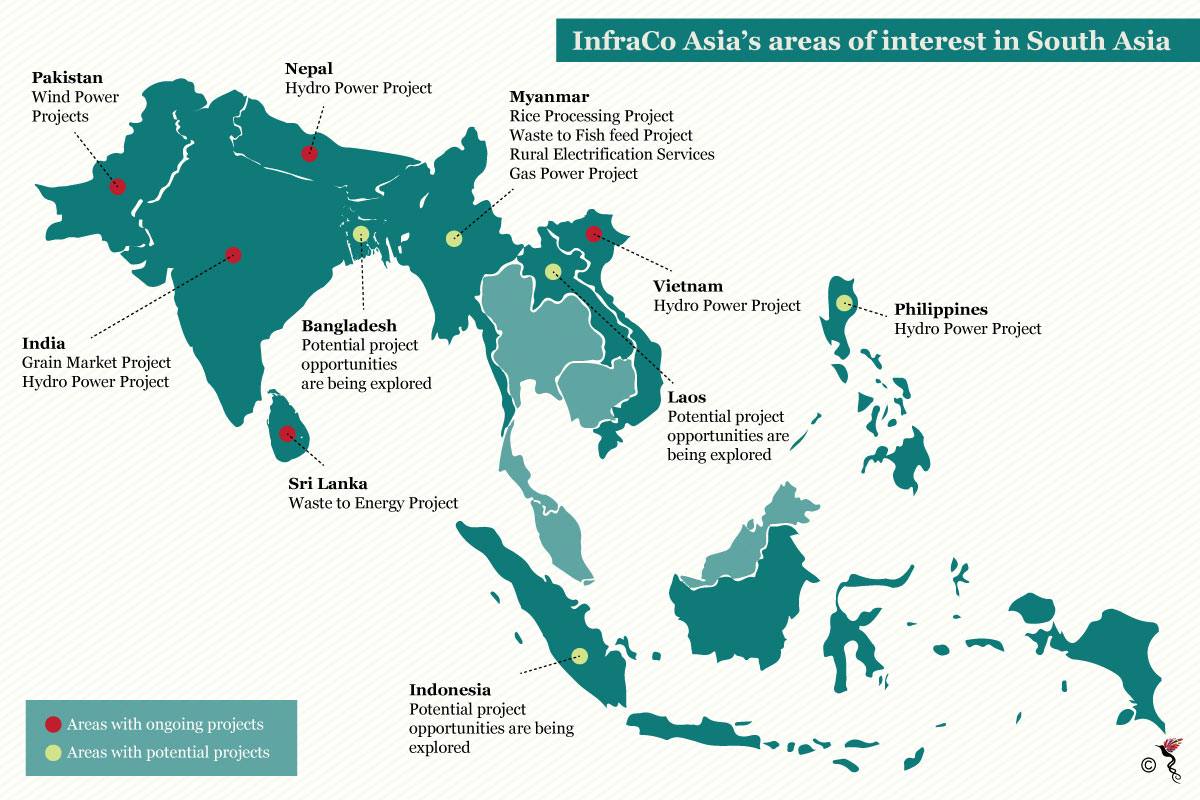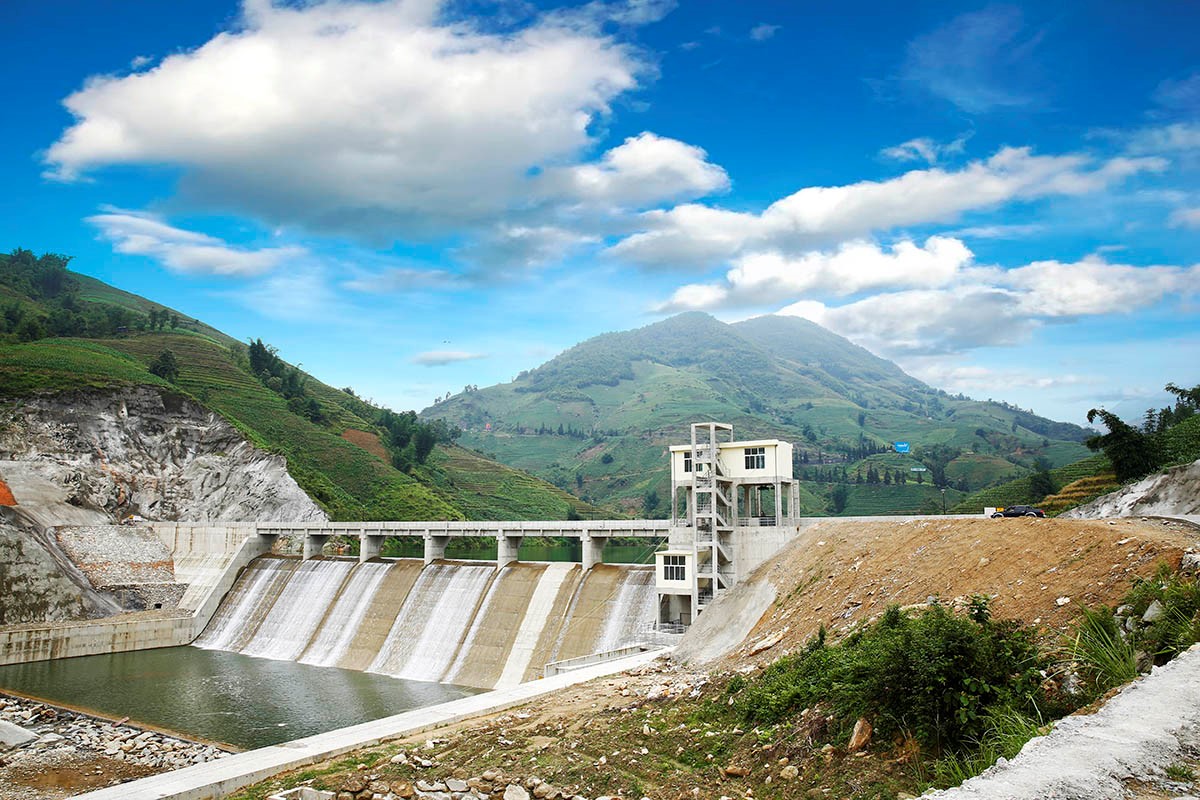As the Southeast Asian region develops rapidly, its future lies in sustainable development.
The combined Gross Domestic Product (GDP) of Association of Southeast Asia Nations (ASEAN) members stands at 2.4 trillion dollars. As a singular economic bloc, ASEAN is the seventh largest economy in the world and is poised to be the fourth largest by 2050. The annual average projected growth from 2016 to 2020 is approximately 5.2 percent.
However, to achieve all of that potential, a key component is infrastructure development. Estimates by the Asian Development Bank indicate that developing Asia will need to invest $26 trillion dollars through 2030, or 1.7 trillion dollars each year, if the region is to maintain this growth momentum, eradicate poverty, and respond to climate change.
This is where public and private sector initiatives play a key role, but if not managed properly, rapid development has the potential to bring about environmental and social hazards.
So how can we match the growing demand for infrastructure development whilst also ensuring environmental sustainability and social responsibility?
Enter, InfraCo Asia.
‘Stimulating greater private sector investment’
Headquartered in Singapore, InfraCo Asia has enjoyed enormous success in developing sustainable, socially responsible and commercially viable infrastructure projects that contribute to economic growth and social development in lower income countries in South and Southeast Asia including Pakistan, Nepal, Sri Lanka, and Vietnam. Its current focus is mainly on power and energy, tele-communication, logistics and transport infrastructure, water and waste water, waste management, urban and social infrastructure, agriculture, oil and gas distribution and manufacturing. Two-thirds of InfraCo Asia’s investments are in the renewable energy space.

InfraCo Asia's areas of interests.
According to InfraCo Asia Chief Executive Officer (CEO), Allard Nooy, “the inspiration for InfraCo Asia was the gap in the market which led to market failures in infrastructure development and financing in Asian countries.”
InfraCo Asia focuses on funding pre-financial close, early stage, high-risk infrastructure development activities. It focuses on de-risking projects and making them bankable¬. This is accomplished by obtaining an equity stake during the infrastructure development phase while accepting the risks that are associated with the projects from conceptualisation to the advanced developmental stage, prior to construction. The company works as a catalyst for these sustainable infrastructure projects to attract private sector investors.
The principal reason InfraCo Asia endures the high-risk period of a project’s developmental stage is to mobilise the investment of private sector capital into the project. In lower-income countries, governments are sometimes unable to meet the financial requirements needed to maintain both existing and future infrastructure development activities. There is a myriad of risks involved including financial, regulatory, legal and technical risks.
“Risk identification and mitigation are part of our DNA,” Nooy said in a telephone interview with The ASEAN Post.
“We have walked away from projects. We undertake due diligence and hire external parties to perform background checks and Know-Your-Customer (KYC) processes to know whether or not a client fulfils our requirements.”
Developing sustainable infrastructure
Projects are only taken on if they meet the company’s three core principles: development impact, additionality, and commercial viability.
A project that meets the company’s mandate would need to provide social and economic benefits to the communities it is to be implemented in. It must also meet meeting environmental best practices, and be a project that private sector developers, owners, and operators are either unwilling or unable to take on the upfront risks and costs. Finally, the project must be commercially attractive to garner participation from private sector investors.
“Of course, we look into whether a project is going to be commercially viable. But we also keep in mind the social impact as well. From the get-go, we always ensure the people we engage with agree with our core principles,” Nooy said.
Currently within Southeast Asia, InfraCo Asia’s projects include the development of a Hydro Power project in Philippines, and a Rice Processing and Rural Electrification project in Myanmar.
So far, the infrastructure projects developed and implemented by InfraCo Asia have created better accessibility in terms of infrastructure for lower-income communities in Southeast Asia. These projects have also enriched host nations by providing employment prospects, carrying out community development programs, and practising environmentally conscious practices as per World Bank guidelines.
An InfraCo Asia success story
In Vietnam’s picturesque Lao Cai Province – amid the dichotomies of natural beauty and expanding industrial activity, InfraCo Asia stepped in to rescue the distressed 29.7 Megawatt Coc San Hydropower Project. It is owned by Lao Cai Renewable Energy (LCRE). In April 2016, the project reached commercial operation.
In a four-year period following the turnaround, the plant will now provide approximately 110 Gigawatt hours(GWh) yearly. It will supply Vietnam’s fast-growing electricity demand, currently growing at 15% year on year and creating demand for electricity infrastructure.
The location however, bears no scars of the construction one might expect to see from a recently completed hydropower project. The pristine conditions of the surrounding flora and fauna were maintained as per rigorous World Bank environmental standards.
Moreover, the Coc San hydroproject was established with minimal land loss to the surrounding communities, and zero displacement of people. The plant will provide 130,000 people with a consistent, reliable and inexpensive power supply. It will also reduce carbon emissions by 76,000 tonnes per annum and slash dependency on energy imported from China.
InfraCo also worked alongside LCRE to run a community development program that restored three schools and built an access road for transport accessibility for the local community. That aside, there was also a livelihood restoration program which was created to provide people whose lands was affected by the development with income-generating enterprises.
Reflecting on the Coc San project, Nooy believes that the project is a testament to the InfraCo Asia philosophy of infrastructure development in emerging Asia.
“Every project we undertake, the core is infrastructure but we ensure that the project is environmentally sustainable and adheres to our strict Corporate Social Responsibility (CSR) principles,” he added.
As countries in Southeast Asia get on the development bandwagon, the nature of any development must be sustainable so that it can continue to deliver economic and social prosperity in the long run. Therefore, it is important that infrastructure developers not only focus on economic development but bring a balance of sustainability into their development objectives
Therefore, it is promising that more and more individuals are becoming aware and sensitive towards any development that threatens the surrounding ecology. InfraCo’s approach and philosophy is well in line with this need, and should be a guiding principle for all future development infrastructure projects in the region.
Recommended stories:
